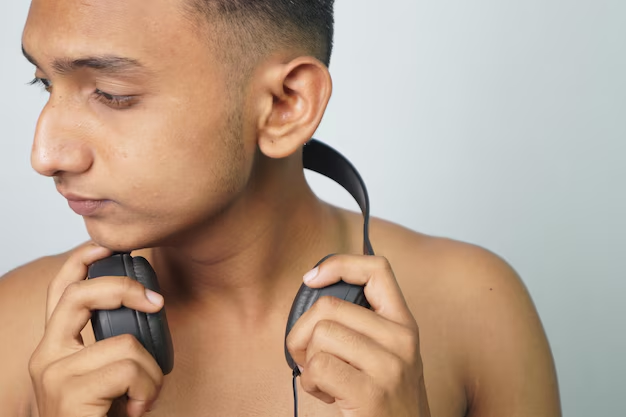The Essential Guide to Putting Hearing Aids In: Steps, Tips, and Insights
Imagine being able to fully engage in every conversation, hear the laughter of a child, or enjoy the subtle notes of your favorite melody with ease. For many, this is made possible by hearing aids, remarkable devices that can significantly enhance hearing ability. If you're new to hearing aids, understanding how to properly insert them is key to maximizing their benefits. This guide will help you navigate the process with confidence, exploring each step and offering practical tips.
🌟 Getting Started: Understanding Your Hearing Aids
Before diving into how to insert your hearing aids, it's crucial to understand their types and components. Hearing aids come in various styles, each designed to suit different types of hearing loss and personal preferences.
Types of Hearing Aids
- Behind-the-Ear (BTE): These sit behind the ear and are connected to a custom-made earmold inside the ear canal via tubing.
- Receiver-in-Canal (RIC): Similar to BTEs but smaller, with the speaker in the ear canal.
- In-the-Ear (ITE): Fit completely inside the outer ear and are suitable for moderate to severe hearing loss.
- In-the-Canal (ITC) and Completely-in-Canal (CIC): These fit partly or completely inside the ear canal and are less visible but may be less suitable for those with severe hearing loss.
Key Components
- Microphone: Captures sound from the environment.
- Amplifier: Increases the strength of incoming sounds.
- Speaker: Delivers amplified sound into the ear.
- Battery: Powers the device.
Understanding these components will help you appreciate how each part contributes to the device's performance, making you more adept at handling them.
🛠️ Step-by-Step Guide: How to Insert Your Hearing Aids
Properly inserting hearing aids is crucial for their effectiveness. Here’s a step-by-step guide to help you do it right.
Step 1: Prepare Your Ears and Device
- Clean Your Ears: Ensure your ears are clean and free of wax or moisture, as this can affect device performance.
- Inspect the Hearing Aid: Check that the hearing aid is clean, free of damage, and equipped with a fully charged or fresh battery.
Step 2: Identify Left and Right
Most hearing aids are marked with blue (left) and red (right) to differentiate each ear. Make sure you insert the correct hearing aid into each ear.
Step 3: Inserting In-the-Ear (ITE) Hearing Aids
- Hold the Hearing Aid: Gently hold the device between your thumb and forefinger.
- Position the Device: Place the sound outlet in the ear canal, tilting it slightly to follow the natural contour of your ear.
- Gently Insert: Push the hearing aid into your ear until it fits snugly and comfortably.
Step 4: Inserting Behind-the-Ear (BTE) Hearing Aids
- Position the Earmold: Insert the earmold into the ear canal, ensuring it fits snugly.
- Place the Device: Position the hearing aid behind the ear, with the tube resting comfortably in the groove.
Step 5: Adjust and Secure
- Check Comfort: Ensure there is no discomfort or feedback (whistling sounds).
- Secure Device: Adjust any retention devices or tubing to ensure the hearing aid stays in place during movement.
🔄 Troubleshooting Common Challenges
Even with the best techniques, you might encounter some issues. Here are common challenges and solutions:
Issue 1: Feedback or Whistling Sound
- Check Fit: Ensure the hearing aid fits snugly and that earmolds are not blocked by earwax.
- Reinsert Device: Remove and reinsert to establish a better seal.
Issue 2: Battery Life Problems
- Confirm Battery: Check that the battery is correctly positioned and fully charged.
- Prevent Battery Drain: Turn off the device when not in use and store batteries at room temperature.
Issue 3: Discomfort
- Evaluate Fit: Earmolds too tight or loose may cause discomfort. Consult your audiologist for adjustments.
- Check for Allergies: Ensure materials do not cause any allergic reactions.
🧩 Enhancing the Experience: Tips for Effective Use
Using hearing aids effectively extends beyond proper insertion. Here are practical tips to enhance your experience:
Maintenance and Care
- Regular Cleaning: Use a soft, dry cloth to gently clean the device daily, and avoid moisture exposure.
- Scheduled Check-ups: Visit your audiologist for regular maintenance and adjustment.
Effective Usage
- Practice in Quiet Areas: Start using your hearing aids in quiet, controlled environments to help your brain adapt to new sounds.
- Gradually Increase Usage: Slowly increase the duration of use to comfortably adapt to the hearing aids.
Connectivity and Technology
- Explore Accessories: Consider using streaming devices or remote controls that pair with your hearing aids for additional functionalities.
- Stay Updated: Familiarize yourself with new hearing aid technologies and upgrades that can enhance your experience.
📋 Quick Summary: Key Takeaways
Here’s a summary to help you recall the essential steps and tips when handling hearing aids:
- 🦻 Types: Know which style suits you best—BTE, RIC, ITE, ITC, or CIC.
- 🔄 Inserting Steps: Clean ears, identify sides, insert carefully, and ensure comfort.
- 🔧 Troubleshoot: Check fit, battery, and comfort if issues arise.
- 🧼 Maintenance: Regular cleaning and audiologist visits are crucial.
- 🏠 Adaptation: Start in quiet spaces and gradually increase usage.
- 🌐 Technology: Utilize pairing accessories and stay informed on advancements.
Understanding how to handle your hearing aids can greatly enhance your quality of life. With proper insertion techniques and care, you can ensure these powerful devices serve you well, opening up a world of sound and enriching your daily interactions. Stay curious, stay informed, and most importantly, enjoy the sounds that make life so vibrant.

Related Topics
- a Plus Hearing Aid Centers
- a Real Pain Showtimes Near Centerville
- Are Airpods Bad For Your Ears
- Are Apple Second Generation Airpods Hearing Aids
- Are Audien Hearing Aids Just Amplifiers
- Are Costco Hearing Aids As Good As Others
- Are Costco Hearing Aids Good
- Are Hearing Aid Domes Interchangeable
- Are Hearing Aid Subscriptions Worth It
- Are Hearing Aid Tax Deductible